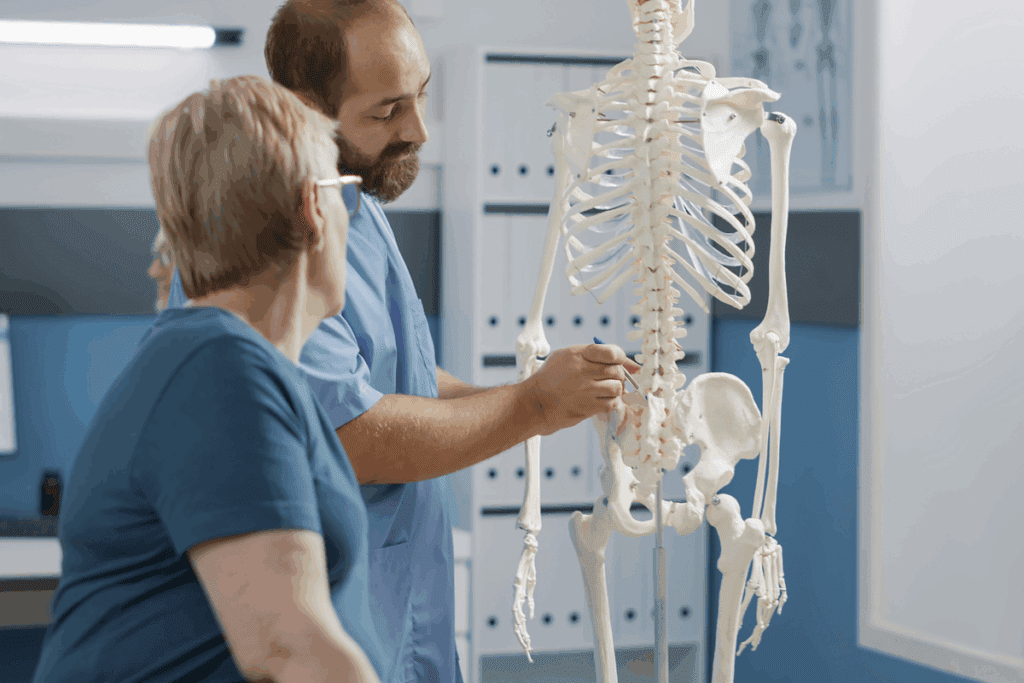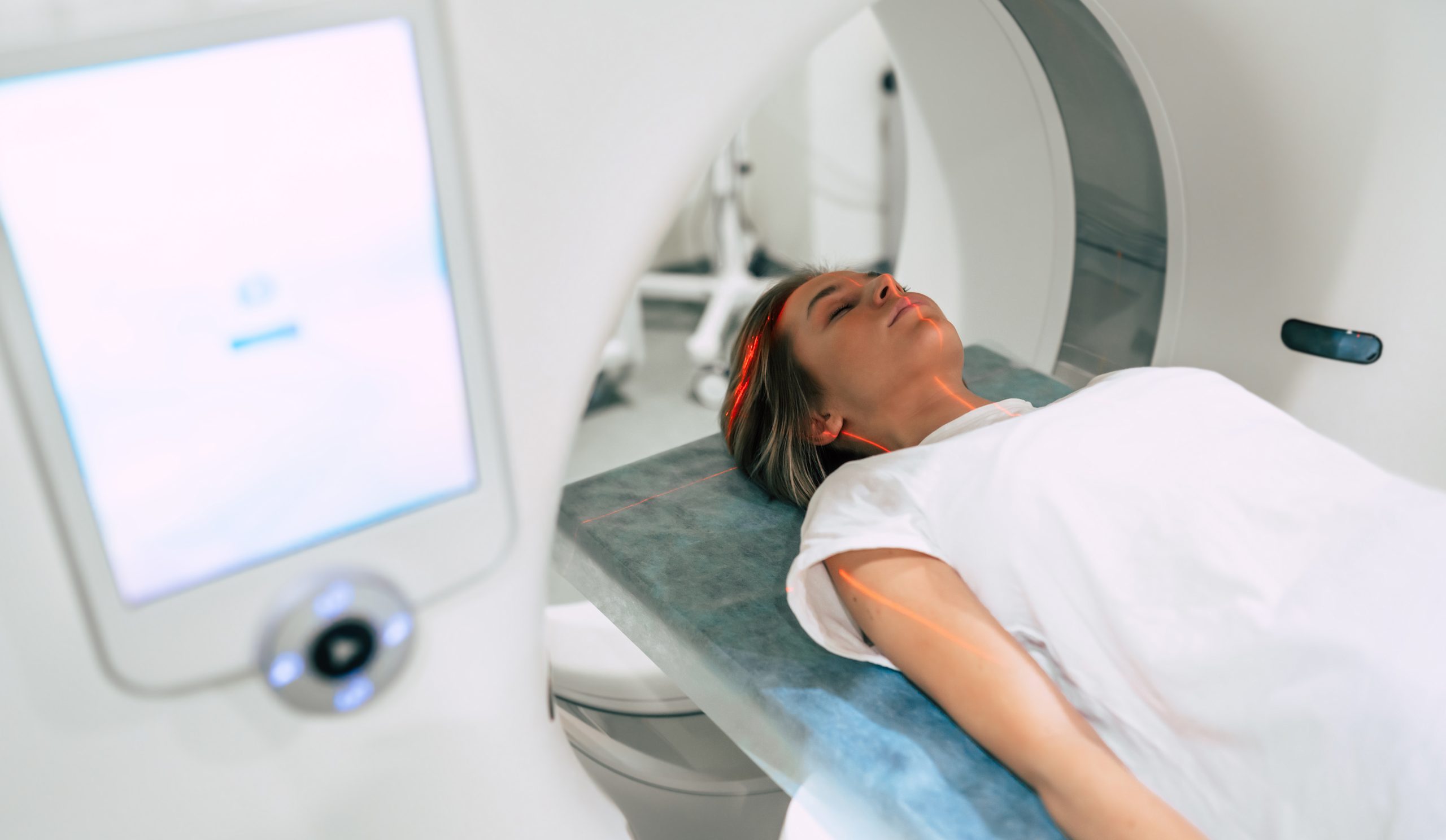Last Updated on November 26, 2025 by Bilal Hasdemir

When a fractured backbone happens, finding the right care is key for a full recovery. At Liv Hospital, we know that fixing the vertebrae and easing pain are essential. They help bring back your quality of life. Discover 7 essential strategies for effective spinal bone fracture treatment. Our expert guide helps you navigate your recovery safely.
We use the newest medical knowledge and a caring touch to help you. Our focus is on you, making sure you get all the care you need. This is for those dealing with spinal vertebrae fracture.
Key Takeaways
- Comprehensive care for spinal bone fractures
- Patient-centered approach for effective recovery
- Latest medical expertise for vertebrae stabilization
- Nurturing support throughout the recovery journey
- Relieving pain and restoring quality of life
Understanding Vertebrae Fractures and Their Impact

It’s important to know about vertebrae fractures to get the right treatment. These fractures happen when one or more vertebrae break. Vertebrae are the bones in your spine.
What Is a Vertebral Fracture?
A vertebral fracture is when a vertebra in your spine breaks or collapses. This can be due to osteoporosis, accidents, or cancer. The break can be small or the vertebra can collapse completely.
- Osteoporotic fractures: Weakened bones due to osteoporosis.
- Traumatic fractures: Resulting from accidents or falls.
- Pathological fractures: Caused by diseases like cancer.
Types of Spine Fractures
There are many types of spine fractures, each with its own cause and effect. The main types are:
- Compression fractures: The most common, often from osteoporosis.
- Burst fractures: Severe fractures that can fragment the vertebra.
- Flexion-distraction fractures: Happen from a mix of bending and stretching forces.
Can You Break Your Vertebrae? Common Causes
Yes, you can break your vertebrae for several reasons. Common causes include:
- Osteoporosis: Makes bones weak, leading to fractures.
- Trauma: Accidents, falls, or injuries.
- Cancer: Tumors can weaken vertebrae, causing fractures.
Knowing these causes helps in prevention and treatment. By understanding the risks, you can lower your chance of getting a vertebral fracture.
Recognizing Spinal Fracture Symptoms

Knowing the signs of a spinal fracture is key to getting the right treatment. Spinal fractures show up in different ways. Being aware of these signs can help you get medical help fast. We’ll look at the various symptoms of spinal fractures, including sudden pain, lower back issues, and signs of compression fractures.
Acute Signs of Spinal Fracture
Spinal fractures can cause sudden, severe back pain that gets worse with movement. Sometimes, pain starts right after a fall. You might also feel numbness, tingling, or weakness in your limbs. It’s important to notice these symptoms to get medical help quickly.
Fractured Lower Back Symptoms
Pain and tenderness in the lower back are common symptoms. You might also see swelling, have trouble walking, or feel muscle spasms. Spotting these signs is key because they can mean a serious problem that needs a doctor’s attention.
Identifying Compression Fracture Indicators
Compression fractures happen in the thoracic or lumbar spine. They can be due to osteoporosis or injury. Look out for back pain that starts slowly, a loss of height, or a hunched posture. Sometimes, these fractures don’t hurt right away, so it’s important to know the signs.
When to Seek Emergency Medical Care
If you have severe back pain after an injury, or if you feel numbness, tingling, or weakness, get help right away. Also, watch for loss of bladder or bowel control, or trouble walking. Spotting these urgent signs can prevent more harm and ensure you get the right care.
| Symptom | Description |
| Severe Back Pain | Pain that worsens with movement |
| Numbness or Tingling | Sensation changes in limbs |
| Localized Pain and Swelling | Pain and swelling at the fracture site |
| Loss of Height or Stooped Posture | Changes in posture due to compression fractures |
Consequences of Untreated Damaged Vertebrae
When vertebrae are damaged and not treated, the effects can be severe and long-lasting. These issues can affect not just the spine but also overall health and well-being.
Neurological Complications
Untreated damaged vertebrae can lead to serious neurological problems. A fractured or damaged vertebra can press on or irritate nearby nerves. This can cause numbness, tingling, or even paralysis. In severe cases, it can cause permanent nerve damage, greatly impacting one’s quality of life.
Chronic Pain Development
Damaged vertebrae can also cause chronic pain. The spine is key in supporting the body’s structure. When it’s damaged, it can lead to persistent pain. This pain can be severe, making everyday tasks hard and affecting mental health.
Spinal Deformity and Loss of Height
Untreated damaged vertebrae can also cause spinal deformity and loss of height. If a vertebra collapses or is not aligned right, it can cause the spine to curve. This curvature, known as kyphosis, can change one’s posture and reduce height, making health issues worse.
Impact on Quality of Life
The impact on quality of life from untreated damaged vertebrae is huge. Chronic pain, neurological issues, and spinal deformity can all lower overall well-being. Simple tasks become hard, and enjoying daily activities is severely impaired.
| Complication | Description | Potential Impact |
| Neurological Complications | Nerve compression or irritation due to damaged vertebrae | Numbness, tingling, paralysis, or permanent nerve damage |
| Chronic Pain | Persistent pain resulting from spinal damage | Debilitating pain affecting daily activities and mental health |
| Spinal Deformity | Curvature of the spine due to vertebral collapse or misalignment | Change in posture, loss of height, and further health complications |
In conclusion, untreated damaged vertebrae have many consequences. They can deeply affect health and quality of life. It’s important to seek medical help if symptoms don’t get better or get worse over time.
Comprehensive Spinal Bone Fracture Treatment Approaches
Dealing with spinal fractures needs a detailed plan for each patient. We know that the right spinal bone fracture treatment is key to fixing the spine and helping patients get better.
Initial Assessment and Diagnosis
The first step is a careful check-up and diagnosis. We look at the patient’s medical history, do a physical exam, and use X-rays, CT scans, or MRI to see how bad the injury is.
A top orthopedic surgeon says, “Getting the diagnosis right is the first step to managing spinal fractures well.”
“Understanding the fracture and the patient’s health is the key to successful treatment.”
Treatment Selection Factors
Choosing the right treatment for spinal bone fractures depends on several things. These include the type and how bad the fracture is, the patient’s age and health, and if there’s nerve damage.
| Factor | Description | Impact on Treatment |
| Fracture Type | Classification of the fracture (e.g., compression, burst) | Determines the need for surgical intervention |
| Patient Age | The age of the patient | Influences the choice between conservative and surgical management |
| Neurological Deficits | Presence of nerve damage or neurological symptoms | May necessitate urgent surgical decompression |
Creating an Individualized Treatment Plan
After checking everything out, we make a personalized treatment plan for each patient. This plan might include non-surgical methods, medicine, physical therapy, or surgery.
Recovery Timeline Expectations
Knowing how long recovery will take is important. It helps set realistic goals and makes the healing process smoother. The time it takes to get better depends on the fracture’s severity and the treatment chosen.
We aim to give top-notch care and support to patients from all over. We help them through every step of their recovery.
Strategy 1: Non-Surgical Management for Stable Fractures
The first step for stable spinal fractures is often non-surgical treatment. This method helps ease symptoms, aids in healing, and improves function without surgery.
Rest and Activity Modification
Rest is key in treating stable fractures without surgery. Patients should avoid heavy lifting, bending, or hard exercise. This helps the fractured vertebrae heal right.
Bracing and External Support Options
Braces and support devices are important for spine stability and healing. They help by reducing pain and movement. The brace type depends on the fracture’s location and severity.
Pain Management Techniques
Managing pain is vital for non-surgical treatment. Doctors use medicines, physical therapy, and methods like acupuncture or chiropractic care. They create a pain plan just for the patient.
Monitoring Healing Progress
Regular check-ups with doctors are important to track healing. Tests like X-rays or MRIs may be used to see how the fracture is doing. Treatment plans can be changed if needed for the best recovery.
Non-surgical management can greatly help patients with stable fractures. Our team is dedicated to giving personalized care and support during recovery.
Strategy 2: Medication Therapies for Fractured Spine Recovery
Recovering from a fractured spine often needs a mix of treatments. Medications are a big part of this. Knowing the signs of a spinal fracture is key for quick care. Medicines help manage pain and aid in healing.
Analgesic Medications for Pain Relief
Analgesics are key for pain from spinal fractures. We use many types, from over-the-counter to prescription, to help patients feel better. Experts say managing pain well is important for comfort and recovery.
For mild pain, we often use acetaminophen or ibuprofen. For more severe pain, we might use stronger opioids carefully.
Bone-Strengthening Medications
For osteoporotic fractures, bone-strengthening meds are vital. They help stop bone loss and lower the chance of more fractures. Bisphosphonates, for example, slow bone loss.
We also use denosumab and teriparatide to boost bone density. The right medicine depends on the patient’s health and fracture cause.
Managing Inflammation and Muscle Spasms
Reducing inflammation and muscle spasms is also key for comfort and healing. NSAIDs help with inflammation, and muscle relaxants ease spasms.
Controlling these symptoms helps patients feel better and join in physical therapy and rehab. These are important for getting better.
Medication Considerations for Osteoporotic Fractures
For osteoporotic fractures, we look at long-term care. We focus on preventing future fractures. This includes meds, lifestyle changes, and supplements for bone health.
We stress the need for calcium and vitamin D to boost bone density. “A good treatment plan includes meds, lifestyle changes, and nutrition,” say health experts.
Strategy 3: Rehabilitation and Physical Therapy Protocols
A good rehabilitation program is key for healing from a vertebral fracture. It helps patients get stronger, move better, and be more independent.
Core Strengthening and Stabilization Exercises
Core exercises are important for keeping the spine stable and improving posture. We suggest exercises that work the abdominal and back muscles. These muscles are key for spine support.
- Plank Exercise: Strengthens the core muscles, improving spinal stability.
- Bridging: Enhances the strength of the back muscles and glutes.
- Pelvic Tilt: Helps in stabilizing the lower back.
Posture Improvement Techniques
Keeping the right posture is important during recovery. We teach patients how to improve their posture to lessen spine strain.
| Technique | Description | Benefit |
| Awareness Training | Patients learn to be aware of their posture throughout the day. | Reduces strain on the spine |
| Stretching Exercises | Regular stretching to improve flexibility and reduce muscle tension. | Improves range of motion |
| Strengthening Exercises | Targeted exercises to strengthen the muscles that support good posture. | Enhances spinal stability |
Gradual Return to Activities
Going back to normal activities slowly is important to avoid injury and ensure recovery. We help patients make a plan to get back to their daily life and activities.
Preventing Secondary Complications
Stopping secondary problems like chronic pain, more fractures, or spinal deformity is a big part of rehab. We teach patients how to keep their spine healthy through lifestyle changes and exercises.
By following a detailed rehab and physical therapy plan, patients can fully recover and lower the chance of future spinal issues.
Strategy 4: Surgical Interventions for Spinal Vertebrae Fracture
When other treatments don’t work, surgery is key for spinal vertebrae fractures. These fractures can happen from accidents, weak bones, or cancer. Surgery helps to ease pain, stabilize the spine, and improve function.
Minimally Invasive Procedures: Vertebroplasty and Kyphoplasty
Vertebroplasty and kyphoplasty are good for some spinal fractures. They involve putting bone cement into the broken vertebra to make it stable and less painful. Vertebroplasty is for fractures that aren’t too compressed. Kyphoplasty uses a balloon to make space before cement is added, helping to restore the vertebra’s height.
Spinal Fusion and Instrumentation for Shattered Vertebrae
For more serious fractures, like shattered vertebrae, spinal fusion and instrumentation are needed. This method uses rods, screws, and other tools to hold the spine together while it heals. Spinal fusion is a more serious procedure that aims to permanently fix the spine.
| Procedure | Description | Indications |
| Vertebroplasty | Injecting bone cement into the fractured vertebra | Stable fractures, pain relief |
| Kyphoplasty | Inflating a balloon to create space before injecting bone cement | Fractures with significant compression, restoring vertebra height |
| Spinal Fusion | Using rods, screws, and devices to stabilize the spine | Complex fractures, shattered vertebrae, spinal instability |
Decompression Surgery for Nerve Involvement
When fractures press on nerves, decompression surgery is needed. This surgery removes bone or other things that are pressing on nerves. It helps with symptoms like numbness, tingling, or weakness.
Post-Surgical Care and Recovery
After surgery, a good care plan is key for recovery. This includes managing pain, physical therapy, and check-ups. Following post-surgery instructions is important to avoid problems and ensure a good recovery.
Knowing about surgical options for spinal fractures helps patients make better choices. Our team is dedicated to giving personalized care and support during treatment.
Strategies 5-7: Advanced Treatment Approaches
We’re now exploring advanced strategies for spinal bone fracture treatment. These methods help improve recovery and overall health. They are key to long-term success and patient happiness.
Strategy 5: Comprehensive Pain Management Programs
Managing pain is a big part of treating spinal bone fractures. We use many methods, like medicine, physical therapy, and therapies like acupuncture and meditation. This comprehensive pain management helps patients feel better and recover faster.
We make our pain management plans just for each patient. We consider the fracture’s severity, the patient’s health history, and their likes. This way, we can manage pain well and avoid problems or too much medicine.
Strategy 6: Lifestyle Modifications for Bone Health
Making lifestyle changes is key to better bone health and preventing fractures. We teach patients about lifestyle modifications that help bones. This includes eating right, exercising, and staying healthy.
We also talk about the benefits of a healthy weight, not smoking, and drinking less alcohol. These habits help bones and overall health, reducing the risk of other health problems.
Strategy 7: Long-term Monitoring and Preventive Care
Long-term monitoring is important for spinal bone fracture treatment. It makes sure the fracture heals right and catches any problems early. We check on patients regularly to see how they’re doing.
Preventive care is also a big part of our plan. We teach patients to watch for signs of trouble and follow their treatment plans. This way, we help them avoid future fractures and keep their spines healthy.
Conclusion: Optimizing Recovery from Spinal Fractures
Recovering from spinal fractures needs a complete plan. This plan includes the latest treatments for spinal fractures. We focus on both physical and emotional care to help our patients get better.
Knowing about vertebrae fractures and their signs is key. This knowledge helps patients get the right treatment fast. Our seven strategies help fix vertebrae, ease pain, and boost life quality.
Good treatment is key to getting better from spinal fractures. We make care plans for each patient. These plans include non-surgical methods, medicines, rehab, and surgery if needed. Following these steps helps patients recover well and feel better overall.
FAQ
What are the common symptoms of a spinal fracture?
Symptoms include sudden back pain and loss of height. You might also feel limited mobility and see spinal deformity. It’s important to notice these signs quickly for medical help.
Can a vertebral fracture heal on its own?
Some fractures can heal with rest and care. But, others might need medical help to stabilize the vertebrae and avoid more problems.
What is the difference between a compression fracture and a burst fracture?
A compression fracture happens when a vertebra collapses, often from osteoporosis. A burst fracture is worse, where the vertebra breaks in more than one place, possibly moving fragments.
How is a spinal fracture diagnosed?
Doctors use your medical history, a physical check, and imaging like X-rays, CT scans, or MRI. These tests help see how bad the fracture is and if there are other injuries.
What are the treatment options for a fractured spine?
You might not need surgery, just rest, bracing, and pain relief. But, for serious cases, surgery like vertebroplasty, kyphoplasty, or spinal fusion might be needed.
How long does it take to recover from a spinal fracture?
Recovery time depends on the fracture’s severity, treatment, and your health. It can take weeks to months to see big improvements.
Can spinal fractures lead to long-term complications?
Yes, untreated or poorly managed fractures can cause chronic pain, spinal deformity, and loss of height. They can also affect your nerves, making life harder.
What lifestyle changes can help improve bone health after a spinal fracture?
Eating well, with lots of calcium and vitamin D, and exercising regularly can help. Quitting smoking and drinking less alcohol also helps keep bones strong.
Are there any preventive measures for spinal fractures?
Yes, managing osteoporosis, staying healthy, and avoiding falls are key. Regular doctor visits can also spot risks early.
References
- Kanis, J. A., McCloskey, E. V., Johansson, H., Oden, A., Melton, L. J., & Khaltaev, N. (2008). A reference standard for the description of osteoporosis. Bone, 42(3), 467-475.https://www.ncbi.nlm.nih.gov/pubmed/18029633
- Laredo, J. D., Hamze, B., & Hamze, O. (2016). Percutaneous vertebroplasty and kyphoplasty in osteoporotic vertebral fractures: indications, technique, and results. Joint Bone Spine, 83(4), 395-401.
https://www.sciencedirect.com/science/article/pii/S1297319X16300234






